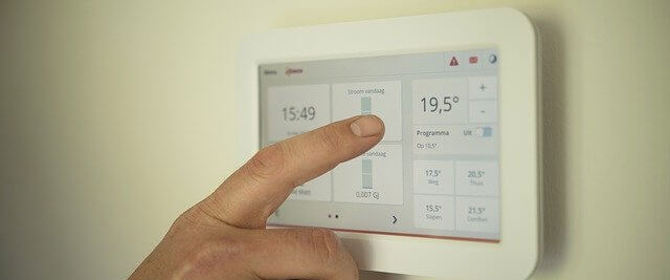How To Save Energy In Your Living Room
We’ve created this handy guide to give you some top tips for saving energy in your living room.
January 2021
| Money Saving

Underfloor heating is becoming increasingly popular. This is mainly due to the increased levels of comfort and warmth it provides.
If you’re thinking about installing underfloor heating in your home, this guide will provide you with everything you need to know – from installation prices to pros and cons.
Read on to find out more about underfloor heating and get the information you need to decide whether it’s a suitable option for you.
Underfloor heating is a measure that warms your floors to provide your rooms with additional warmth and comfort. It can also be used as a primary source of heating. With a lower operating temperature of 40°C, this solution can help to reduce the amount of energy used by your boiler and radiators. It could therefore also help to reduce your home energy bills.
To help you decide whether underfloor heating is suitable for your home, below we outline its main pros and cons.
Pros
Cons
There are two main forms of underfloor heating. These are:
With this option, pipes linked to your boiler are placed beneath your floors. Warm water is then pumped through them to produce rising heat. Wet underfloor heating installations can be complex, so they are not suitable for DIY and the job can be expensive. However, running costs can be cheaper than electric underfloor heating. Wet underfloor heating is typically recommended for households that are being built from scratch or undergoing renovation.
This is typically a cheaper option; it is usually recommended for existing homes. Wires connected to your mains supply are fitted underneath your floors with a sensor. This way you can regulate your heating with a thermostat. You can choose between loose-fit wiring (typically best suited to smaller areas), cables or mats (usually more suitable for larger spaces).
With electric underfloor heating, you’ll need to install a layer of insulation below the wiring or mats in order to prevent heat from being lost downwards. This option is less complicated than wet underfloor heating installations, so it can be performed DIY. However, running costs can be more expensive.
Underfloor heating can be expensive. Costs can vary and tend to depend on factors such as:
The mats for electric underfloor heating systems are typically priced at around £180 for 10 square meters. Other costs for factors such as insulation and heating controls will also be incurred. You may also have to pay for a qualified electrician to link the underfloor heating to your mains electricity supply.
This is the more expensive form of underfloor heating. Average costs range at around £2,000, with daily installation rates of approximately £300. Overall costs tend to depend on factors such as how close the rooms are to your boiler and where the room is located in your home (e.g. ground floor or higher).
Underfloor heating is not the only way to make your home warm. The following measures can also help you heat your home more effectively and efficiently:
The most recommended way to reduce your energy bills is to switch energy suppliers. If you haven’t changed suppliers in a while, it’s likely that you’re overpaying for your household gas and electricity.
But not to worry, we provide a free online comparison tool which is designed to compare the best energy deals on the market.
Give our free comparison tool a try today. Alternatively, take a look at the rest of our energy guides for more advice on energy saving.
Related Articles
We’ve created this handy guide to give you some top tips for saving energy in your living room.
January 2021
Take a look at our ultimate guide to reducing home energy usage and lowering your bills!
February 2021